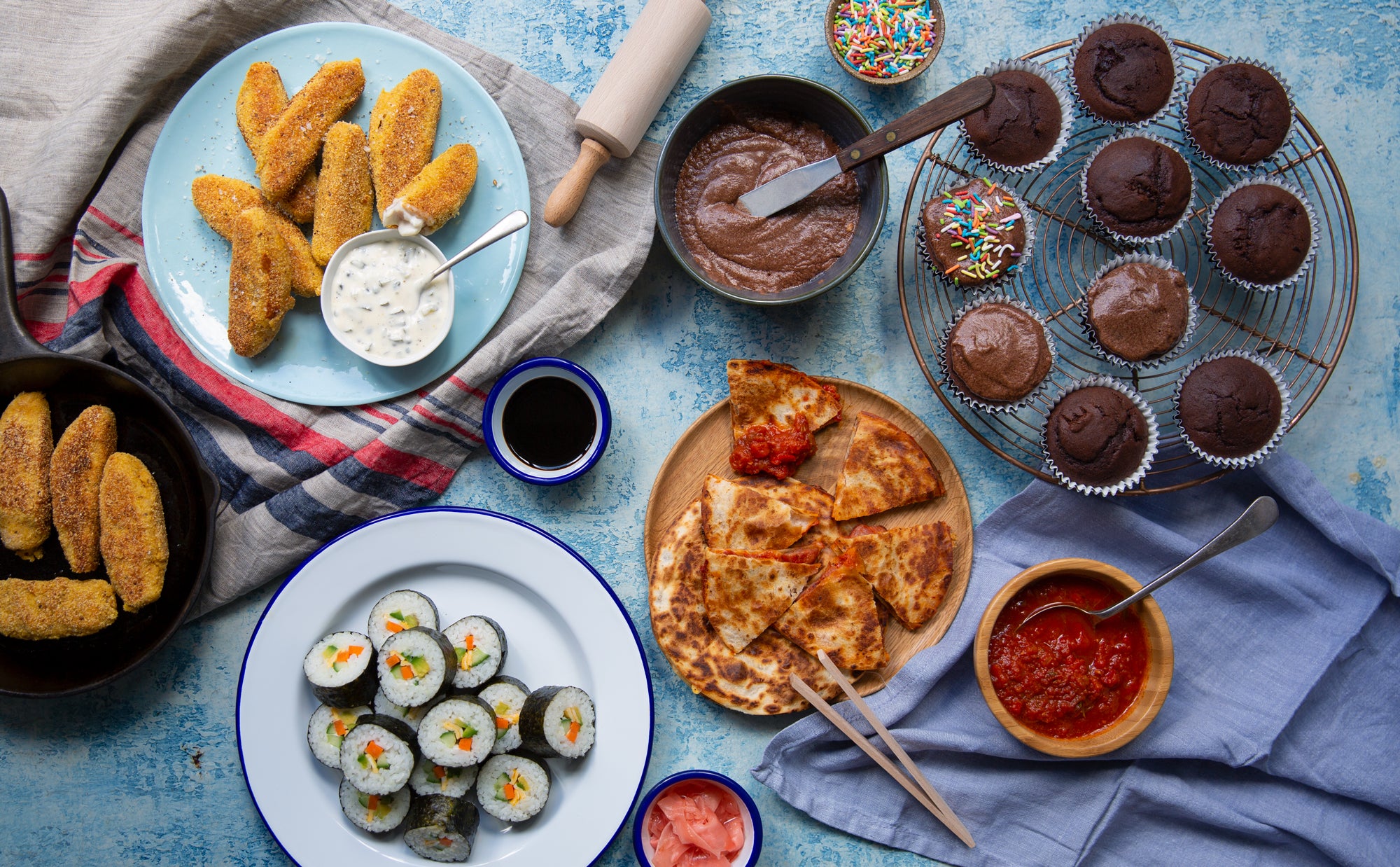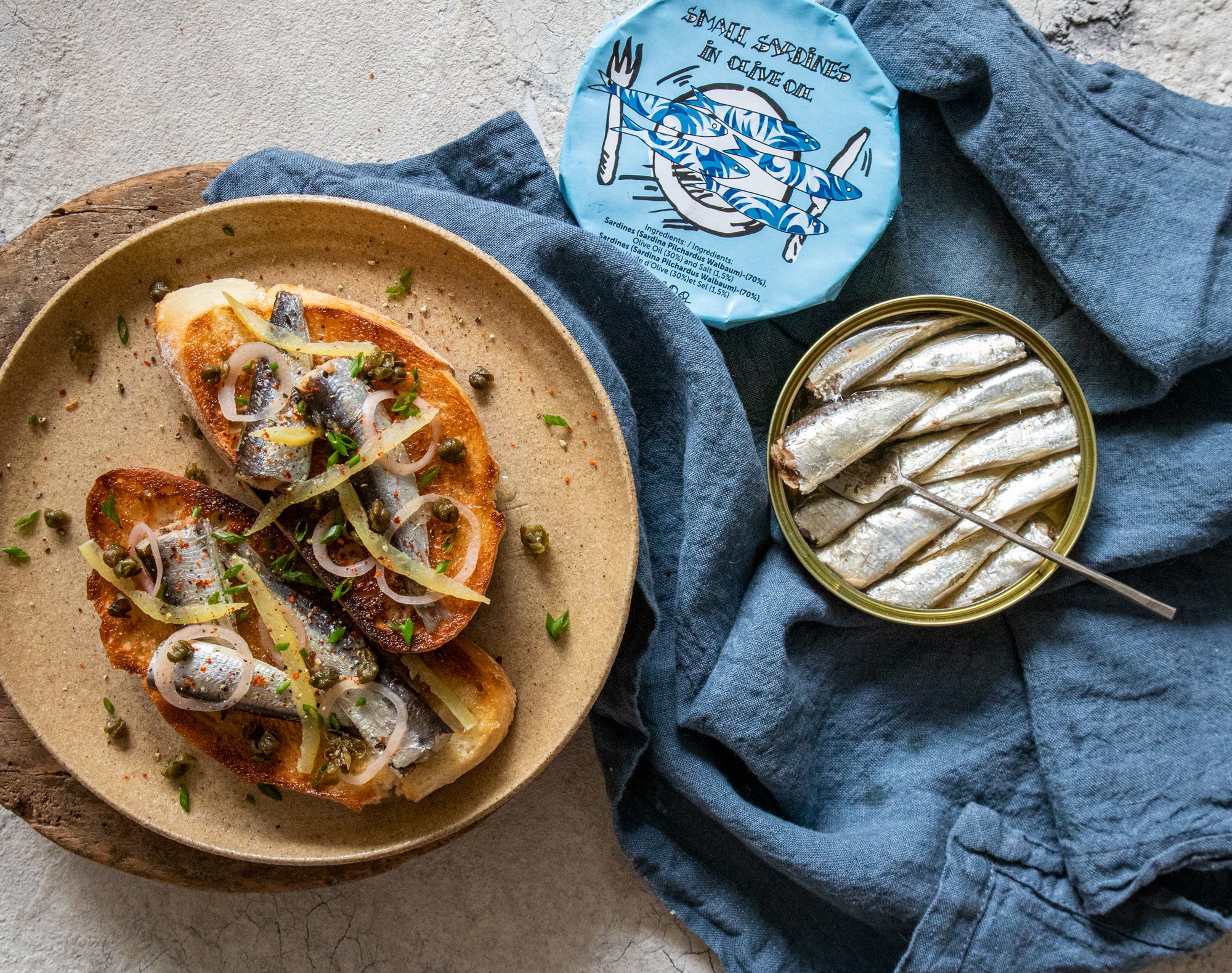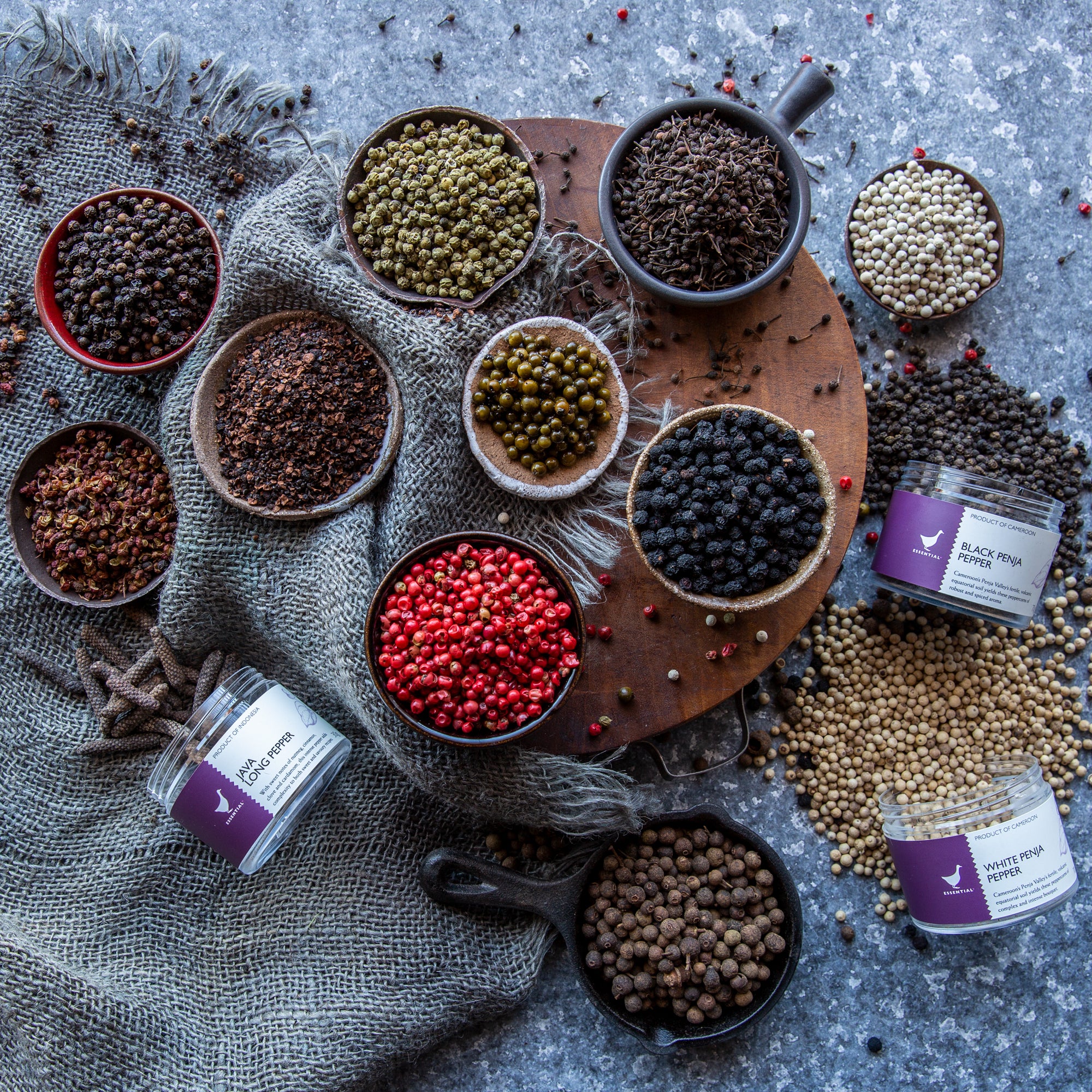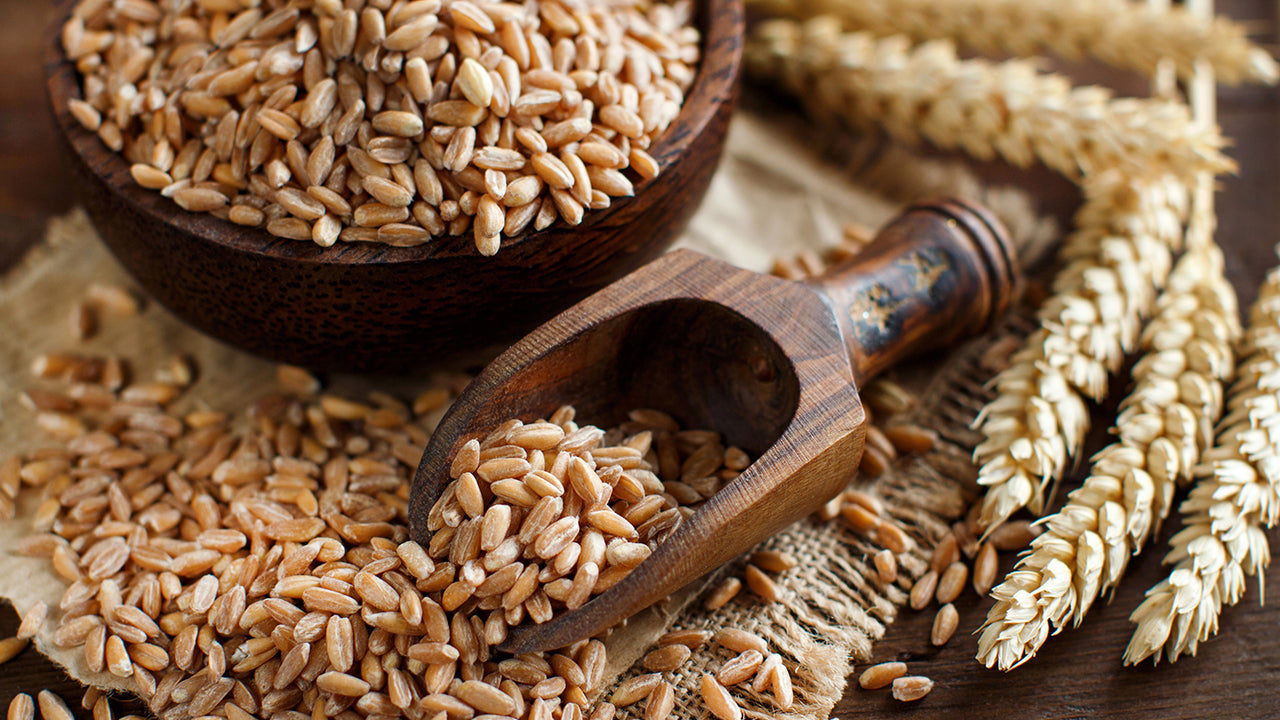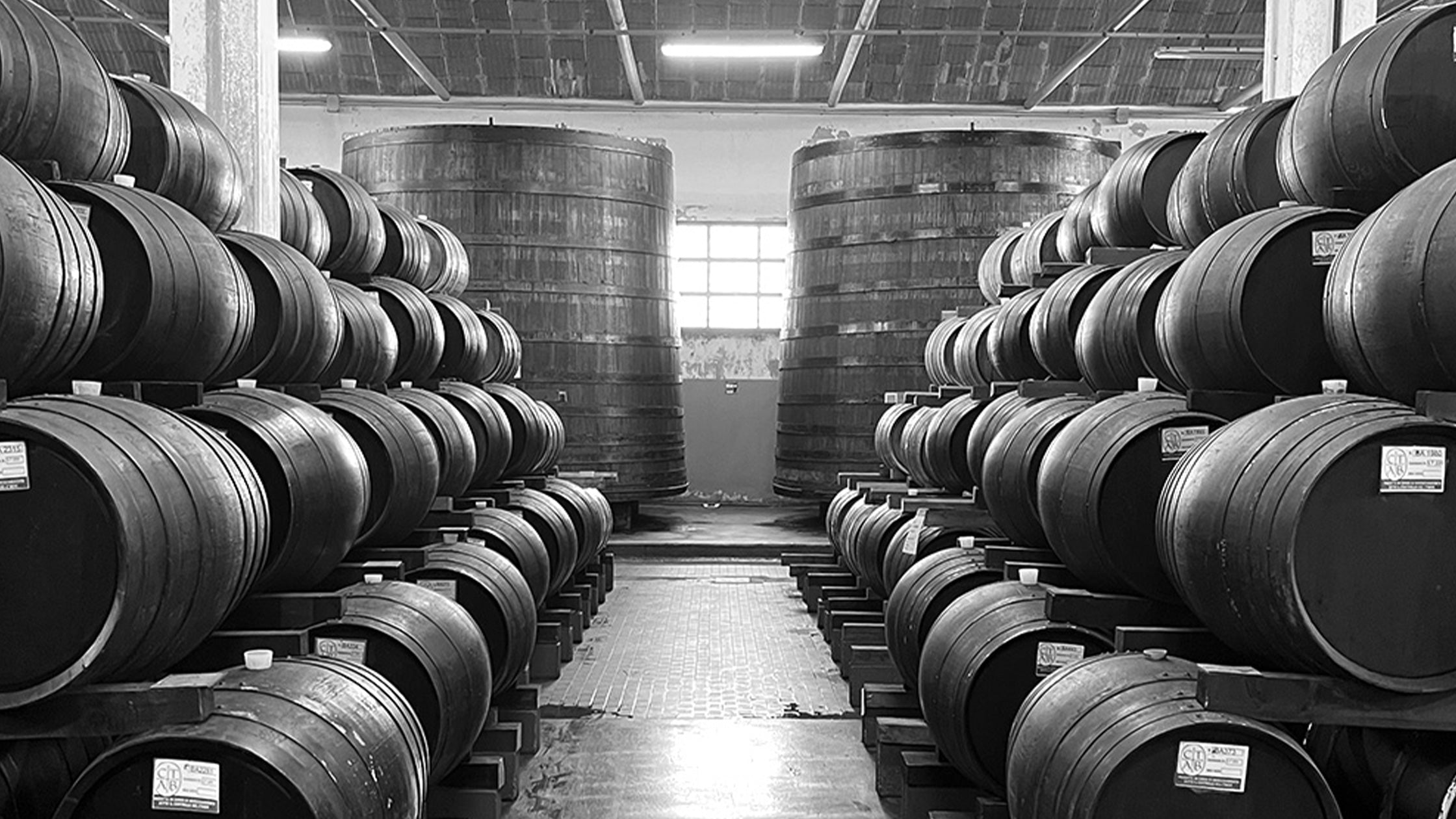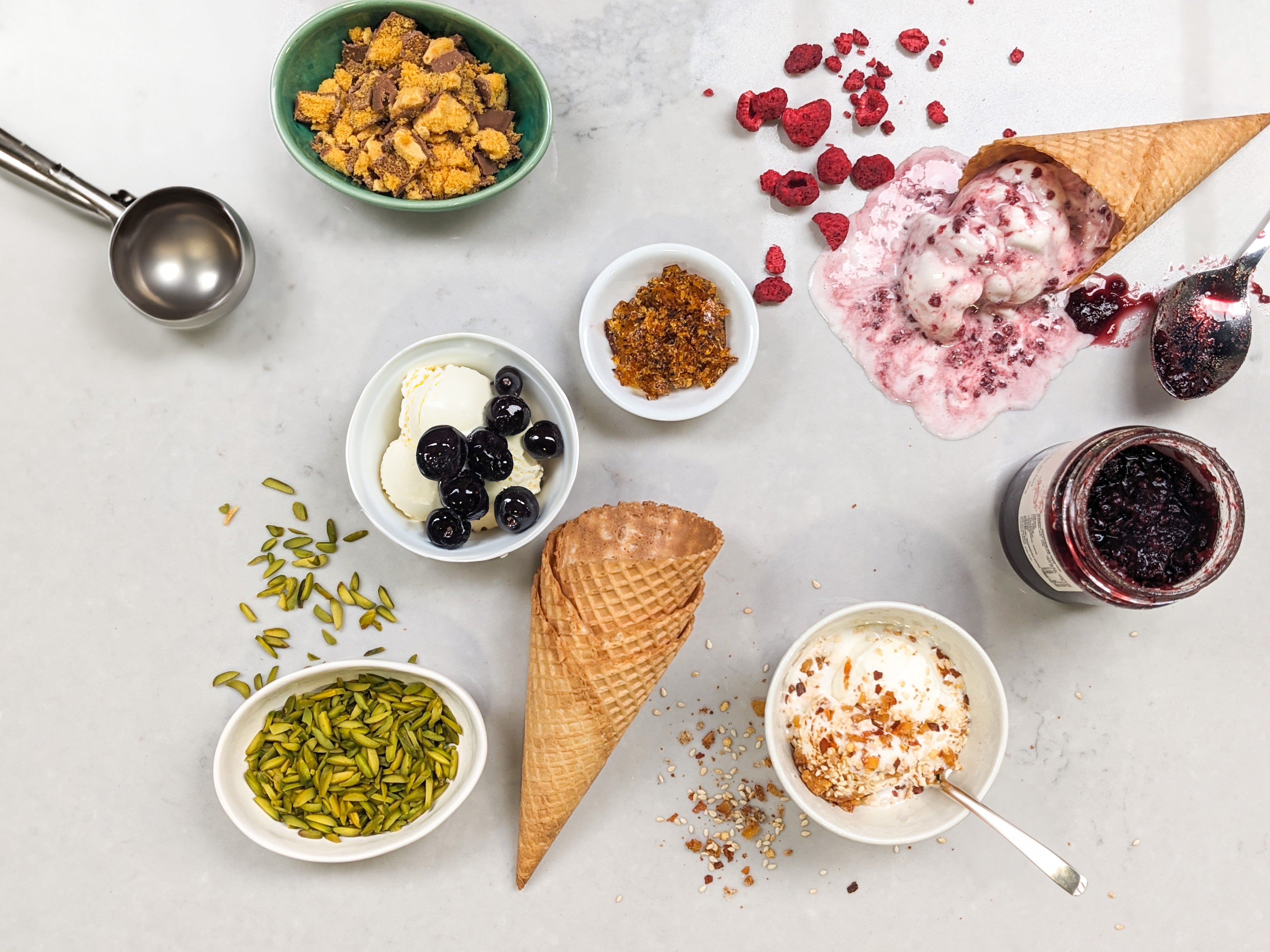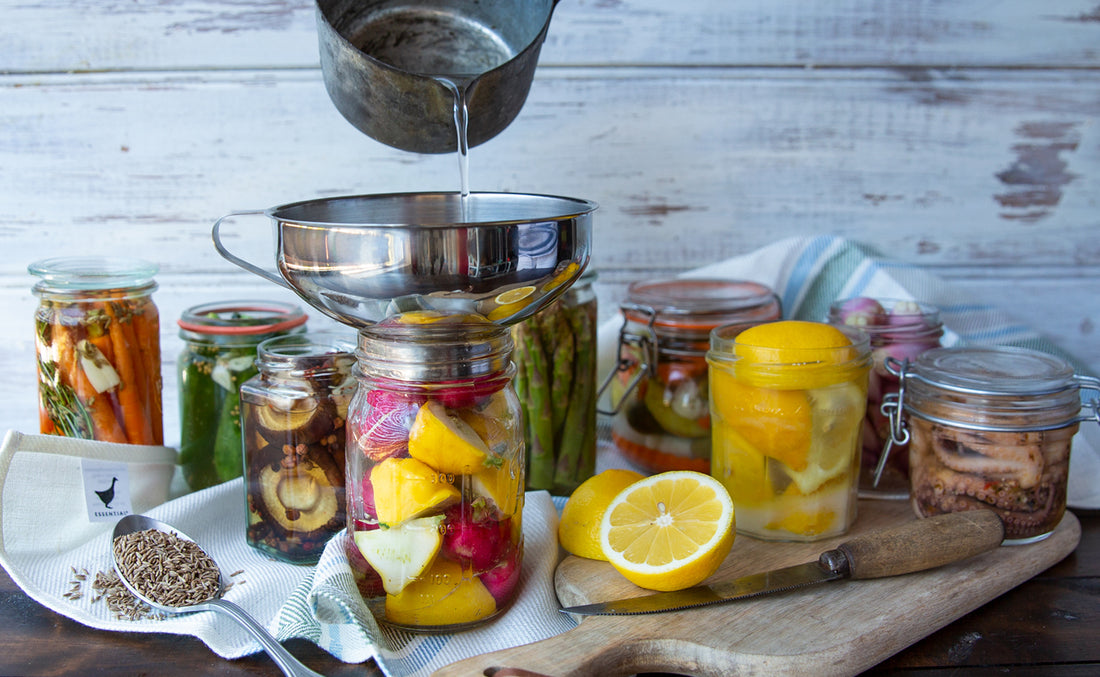
A guide to pickling at home
Last updatedPickling in-season produce is a millennia-old tradition that not only preserves bountiful harvests for less verdant months, but adds a hit of acidity and vibrancy to any dish.
If you want to introduce new flavours to your dishes, pickling could be the perfect solution! It’s a fun and simple technique that can be executed at home without fancy equipment.
In this blog, we’ll cover the basics of pickling, including how to pickle vegetables and how to select the best vinegar for pickling.
What is pickling?
Pickling is a food preservation technique that involves soaking food in an acidic brine. The brine contains vinegar or a combination of vinegar and water with various spices and herbs. The solution is poured over vegetables, fruits, meat or fish, which are then packed tightly in a jar for several days, allowing the flavours to penetrate the food entirely.
Salt and vinegar solutions help stop the growth of yeast, mould and bacteria, which can cause rotting and spoilage. As a result, food lasts much longer than if they were left exposed to air.
But pickling does much more than preserve food. It can also alter their taste and texture. The result is a fresh and complex flavour that is both tangy and savoury.
Common pickling methods
There are three main pickling methods:
Cut fruits or vegetables are submerged in a brine of equal parts vinegar and water. The acidic environment impedes the growth of harmful bacteria and preserves food. Pickling with vinegar encompasses various sub-methods depending on your desired outcome. One of these techniques is the water bath canning method, which involves submerging jars filled with pickled foods into boiling water for about 10 minutes.
With this method, jars containing fresh produce submerged in a brine solution are stored in the refrigerator instead of being processed in a canner. While this technique is faster and simpler, food must be left in the fridge and consumed within a few weeks.
This technique involves submerging produce in saltwater brine. The brine supports the growth of beneficial bacteria, which converts sugars in the food into lactic acid.
Lactic acid helps extend the produce’s shelf life and creates a sour, tangy flavour. Fermentation is often used to create kimchi, yoghurt and sauerkraut. The process can take anywhere from a few days to several weeks, depending on temperature and the type of food being pickled.
The advantages of pickling food
Increases shelf life
Pickling is one of the most cost-effective ways to preserve perishable food for months. When done correctly, it can help hinder harmful bacteria from growing and spoiling produce. Compared to freezing food, which requires a steady source of electricity, pickled produce remains stable at room temperature. Pickling also lets you enjoy a wide variety of fruits and vegetables all year long.
Adds an extra layer of flavour
Combining vinegar, salt and sugar provides a unique sweet and sour taste while maintaining the food's firm and crisp texture. Other herbs and seasonings added to the pickling solution contribute to a complex taste. Additionally, the acid in the vinegar helps break down tough meat fibres, making them more tender and flavourful.
Helps regulate blood sugar
Vinegar has been shown to prevent blood sugar spikes. According to one study, vinegar can potentially help reduce post-meal blood glucose levels by as much as 20%.
Maintaining stable glucose levels can help prevent or delay long-term health problems like heart disease and kidney disease.
Inexpensive and easy to do
Pickling is a simple food preservation method that can be done right from the comfort of your kitchen. It doesn't require any special equipment, training or complicated techniques. All you need is a jar, vinegar and your chosen produce.
Pickling is a versatile process that can be applied to various food products. You can experiment with different pickling recipes to suit your unique health goals and preferences.
How to make pickles: 5 tips for success
Choose the freshest ingredients
Always use fresh, quality ingredients. This lowers the risk of harmful bacteria growth that can lead to food poisoning. Using old or spoiled produce can reduce pickling effectiveness in preventing spoilage.
Follow a tested recipe
Pickling recipes include precise measurements to ensure the best possible results. As much as possible, do not alter vinegar, salt and water proportions in a recipe or use vinegar with unknown acidity. Insufficient brine can result in soft or slippery vegetables and even spoilage.
Tougher vegetables and fruits, such as pumpkin, carrots, radishes and apples, should be cooked slightly in your pickling mix, while softer ingredients (cucumber, berries, mushrooms, etc.) should have the cooled pickling liquor added.
Sterilise jars and lids
The simplest way to sterilise glass jars is to submerge them in boiling water for about 10 minutes. Deep cleaning your jars reduces the likelihood of any toxins or bacteria from spreading into your pickles.
Use the right vinegar
Choose the right type of vinegar and the right mix of spices to enhance the flavours of those ripe fruits and vegetables, and you'll be itching to enjoy your homemade pickles long before winter hits. Different vinegars have different levels of acidity (in the same way that different salts are varying degrees of salty), so experiment to find the right mix of vinegar, salt, sugar and water for each vegetable.
Pickled calamari, octopus, mussels and prawns make a terrific addition to an antipasto platter, while using rice wine vinegar, mirin and spices like star anise, cinnamon and Szechuan peppercorns to pickle shiitake mushrooms makes a great addition to an Asian spread.
Many vinegars, like red wine vinegar, white wine vinegar, sherry vinegar, champagne vinegar and fruit vinegars add not only acidity to your pickles, but additional flavour, while balsamic vinegars also add complex sweetness.
Add extra spices and flavours
Infuse an extra hit of flavour by incorporating garlic, ginger, citrus peel or other aromats to your pickles.
Common pickling mistakes to avoid
Shrivelling
Shrivelling occurs when the brining solution is too strong. Measure ingredients carefully and gradually add salt, sugar or vinegar until you've reached the right amount. Use vinegar that has 5% acidity. Overprocessing, overcooking and not using fresh cucumbers may also cause vegetables to shrivel.
Cloudy brine
In vinegar pickles, a cloudy brine may indicate contamination or spoilage. When this happens, it’s best to discard the pickles.
Brine can turn cloudy for several reasons, including underprocessing, yeast growth or minerals in hard water. To avoid this problem, use soft or distilled water. Carefully follow the recommended processing time for your pickling vegetable or fruit.
Discolouration
Darkened or discoloured pickles can be due to the presence of certain minerals in the water. This is why it's always best to use soft or distilled water.
Use stoneware, unchipped enamelware or stainless steel utensils when heating basic pickling liquid. Iron, brass, copper or galvanised utensils may react with the acid in the brine and discolour the vegetables.
How to make pickles: A recipe for beginners
The following basic pickling liquid recipe can be easily modified to incorporate your favourite vinegars, spices, salts and sugars, and will have your homemade pickles ready in under an hour. Scale up as needed.
Ingredients:
- 2/3 cup vinegar
- 1 cup water
- 1/2 cup sugar
- 2 tsp salt
- 2 cloves garlic, peeled
- 1 tsp fennel seeds
- 1 tsp mustard seeds
- 1 bay leaf
- 1 cup chopped vegetables
Combine the vinegar, water, sugar and salt in a saucepan and bring to a simmer, stirring until sugar and salt are dissolved.
For coarse vegetables, pour hot liquid over and leave the mix sitting for at least 30 minutes until eating.
For softer pickled fruits and vegetables, allow pickling liquid to cool before combining.
Store in the fridge in an airtight container and use within a week.
HOME PICKLING FAQS
What kind of vinegar do you use for pickling?
All vinegars can be used for pickling, however some will give you better results than others. White vinegar can have a harsh flavour that might rob the vegetables you're pickling of some of their flavour, while strongly flavoured vinegars like malt vinegar or red wine vinegar can overpower (and discolour) what you're trying to pickle. Balsamic vinegar is generally not acidic enough for pickling, though it can be used as an ingredient in a pickling liquid. For best, consistent results, we prefer pickling with white wine vinegar.
Pickling with white wine vinegar
Due to its sharp acidity, rounded flavour and neutral colour, white wine vinegar is perfect for pickling. To make a pickling liquid, simply heat the vinegar with some water, sugar, salt and whatever aromatics or spices you want to have flavouring your pickles (garlic and mustard seeds are popular choices), then add the vegetables.
How to make pickle red cabbage with pickling vinegar?
Red cabbage is one of the best pickling vegetables, retaining its colour and crunch. Use the recipe above — we recommend apple cider vinegar — replacing the fennel seeds with juniper berries.
How long do homemade pickles last?
Homemade pickles will last up to a month in the fridge in an airtight container. To keep your pickles shelf-stable for longer periods, you'll need to invest in some specialised preserving jars, and ensure your jarred pickles are heated for a longer period than the recipe above specifies to eliminate any dangerous bacteria.
What onions are best for pickling?
All onions can be pickled, however they will all yield different results. Small pearl
onions are closest to the supermarket pickled onions, due to both their size, sweetness and mild onion flavour. White and red onions also make excellent pickles, though they should be sliced (or quartered) first. Brown onions are less suitable due to their strong flavour, though we encourage experimentation!
Visit The Essential Ingredient for all your pickling needs
Pickling is a versatile food preservation method that can heighten the culinary experience. If you’re interested in delving deeper into the world of pickling, visit your nearest The Essential Ingredient store for jars, vinegars, spices, salts, sugars and all your pickling essentials.

